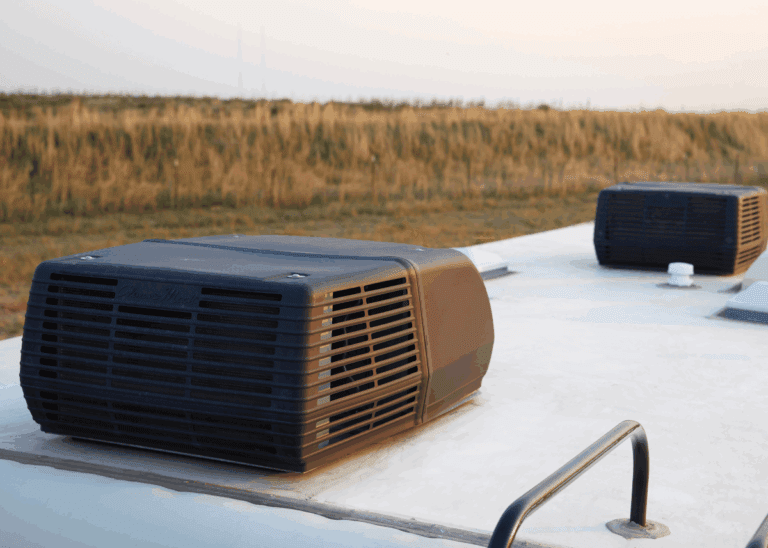3 Common Issues with RV Air Conditioners and How to Troubleshoot Them

3 Common Issues with RV Air Conditioners and How to Troubleshoot Them
With Memorial Day weekend behind, summer is finally here! Now for the road trips, campground cookouts, and of course, rising temps. When the heat rolls in, your RV’s air conditioner becomes a vital piece of equipment. Sure, parking in a campsite with shade trees or a lakeside breeze can help, but when you’re parked in the sun or trying to sleep on a muggy night, that AC is doing the heavy lifting.
But what if it stops working? Before you panic—or start Googling the nearest RV repair shop—here are a couple of common issues and simple troubleshooting steps you can try.
Problem #1: The AC Won’t Turn On
You flip the switch, expecting a blast of cool air, and… nothing. First things first—check for power. A tripped breaker is a common culprit, so take a look at your electrical panel and reset anything that’s been tripped. Still no luck? Inspect your fuses and swap out any that are blown.
It’s also worth checking whether your power source can handle the load. If you’ve got multiple appliances running at once—microwave, fridge, maybe a coffee maker—it might be too much for the electrical system to handle. Try shutting everything else down and turning the AC on solo.
Still nothing? Consult your owner’s manual for a reset procedure. This typically involves resetting the circuit breaker, locating the reset button on the AC unit, and pressing and holding the button for roughly five seconds. If the reset doesn’t solve the issue, it might be time to call in a pro.
Problem #2: The AC Keeps Cycling On and Off
This problem is frustrating. Your AC turns on, cools for a bit, then shuts off–only to do it all over again. One of the most common reasons for this issue is frozen coils, which is often caused by dirty filters, high humidity, or low refrigerant. Regardless of the cause, the fix starts with defrosting.
Turn the AC off completely or switch it to fan-only mode. It may take up to 24 hours for coils to fully thaw, so be patient and keep air flowing if possible.
Problem #3: The AC’s Performance Varies by Location
If you’ve traveled across different regions in your RV, you might’ve noticed your air conditioner seems to run better in dry places like Arizona compared to more humid spots like Florida. That’s not your imagination—humidity plays a big role in how efficiently your AC cools your rig.
In muggy climates, the excess moisture in the air lowers the system’s “Delta T,” which is the temperature difference between the return air and the cooled supply air. When that Delta T drops, your AC has to work harder, running longer just to try and dry off the evaporator coils. Over time, that moisture buildup can even cause the coils to freeze, which restricts airflow and may result in warm air coming out of your vents.
To help lessen the load on your RV’s AC system, try running a dehumidifier inside your RV. You can also boost AC performance by keeping the fan on high and using the air dump feature (if your unit has one), which helps move more air quickly through the RV. This approach often works better than relying on individual ceiling vents to direct airflow.
Regular Maintenance Can Help Prevent Issues with Your RV’s AC
Want to avoid AC issues altogether? Regular upkeep goes a long way. Clean or replace air filters regularly, inspect the coils, clear debris from the unit, and replace any worn-out gaskets or a cracked shroud. A professional check-up once a year is also a smart move.
Have you ever dealt with AC troubles on the road? What worked for you? Drop us a comment with your go-to fixes or contact us today!


